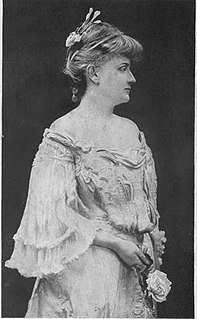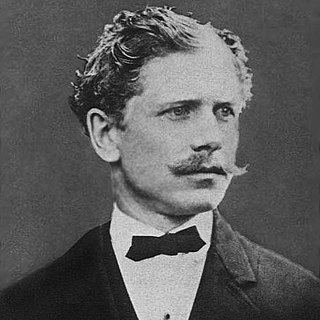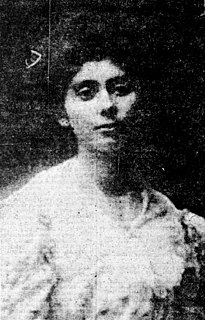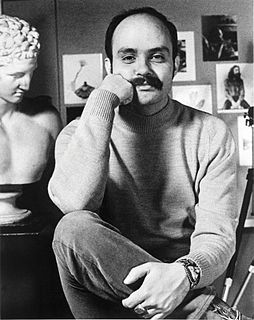
Irwin Allen Ginsberg was an American poet and writer. As a student at Columbia University in the 1940s, he began friendships with William S. Burroughs and Jack Kerouac, forming the core of the Beat Generation. He vigorously opposed militarism, economic materialism, and sexual repression, and he embodied various aspects of this counterculture with his views on drugs, sex, multiculturalism, hostility to bureaucracy, and openness to Eastern religions.

Franklin Patrick "Frank" Herbert Jr. was an American science fiction author best known for the 1965 novel Dune and its five sequels. Though he became famous for his novels, he also wrote short stories and worked as a newspaper journalist, photographer, book reviewer, ecological consultant, and lecturer.

John Griffith Chaney, better known as Jack London, was an American novelist, journalist and activist. A pioneer of commercial fiction and American magazines, he was one of the first American authors to become an international celebrity and earn a large fortune from writing. He was also an innovator in the genre that would later become known as science fiction.

The Call of the Wild is a short adventure novel by Jack London, published in 1903 and set in Yukon, Canada, during the 1890s Klondike Gold Rush, when strong sled dogs were in high demand. The central character of the novel is a dog named Buck. The story opens at a ranch in Santa Clara Valley, California, when Buck is stolen from his home and sold into service as a sled dog in Alaska. He becomes progressively more primitive and wild in the harsh environment, where he is forced to fight to survive and dominate other dogs. By the end, he sheds the veneer of civilization, and relies on primordial instinct and learned experience to emerge as a leader in the wild.

The Little Lady of the Big House (1915) is a novel by American writer Jack London. It was his last novel to be published during his lifetime.

The Star Rover is a novel by American writer Jack London published in 1915. It is science fiction, and involves both mysticism and reincarnation.

The Devil's Dictionary is a satirical dictionary written by American journalist Ambrose Bierce, consisting of common words followed by humorous and satirical definitions. The lexicon was written over three decades as a series of installments for magazines and newspapers. Bierce's witty definitions were imitated and plagiarized for years before he gathered them into books, first as The Cynic's Word Book in 1906 and then in a more complete version as The Devil's Dictionary in 1911.

George Sterling was an American writer based in the San Francisco, California Bay Area and Carmel-by-the-Sea. He was considered a prominent poet and playwright and proponent of Bohemianism during the first quarter of the twentieth century. His work was admired by writers as diverse as Ambrose Bierce, Robinson Jeffers, Jack London, Upton Sinclair, Theodore Dreiser, and Sinclair Lewis.

Gertrude Franklin Horn Atherton was an American author. Many of her novels are set in her home state of California. Her bestseller Black Oxen (1923) was made into a silent movie of the same name. In addition to novels, she wrote short stories, essays, and articles for magazines and newspapers on such issues as feminism, politics, and war.

Jame Gumb is a fictional character and the main antagonist of Thomas Harris's 1988 novel The Silence of the Lambs and its 1991 film adaptation, in which he is played by Ted Levine. In the film and the novel, he is a serial killer who murders overweight women and skins them so he can make a "woman suit" for himself. In the television series Clarice, he is portrayed by Simon Northwood.

Extraordinary Popular Delusions and the Madness of Crowds is an early study of crowd psychology by Scottish journalist Charles Mackay, first published in 1841 under the title Memoirs of Extraordinary Popular Delusions. The book was published in three volumes: "National Delusions", "Peculiar Follies", and "Philosophical Delusions". Mackay was an accomplished teller of stories, though he wrote in a journalistic and somewhat sensational style.

Charmian London was an American writer and the second wife of Jack London.

Ambrose Gwinnett Bierce was an American short story writer, journalist, poet, and American Civil War veteran. His book The Devil's Dictionary was named as one of "The 100 Greatest Masterpieces of American Literature" by the American Revolution Bicentennial Administration. His story "An Occurrence at Owl Creek Bridge" has been described as "one of the most famous and frequently anthologized stories in American literature", and his book Tales of Soldiers and Civilians was named by the Grolier Club as one of the 100 most influential American books printed before 1900.

Rose Strunsky Lorwin was a Jewish Russian-American translator and socialist based in New York City.

John Joseph "Jack" Fritscher is an American author, university professor, historian, and social activist known internationally for his fiction, erotica and non-fiction analyses of popular culture and gay male culture. A pre-Stonewall riots activist, he was an out and founding member of the Journal of Popular Culture. Fritscher was the founding San Francisco editor-in-chief of Drummer magazine.

Anna Strunsky Walling (1877–1964) was known as an early 20th-century Jewish-American author and advocate of socialism based in San Francisco, California, and New York City. She was primarily a novelist, but also wrote about social problems and the labor movement. Born in the Russian Empire in what is now Belarus, she emigrated as a child with her family to New York City in the United States in 1886. After a few years they moved to San Francisco. Strunsky studied at Stanford University, where she met writer Jack London and later became part of a radical group known as "The Crowd", of which London was also a member. They wrote an epistolary novel together, publishing it anonymously in 1903. She wrote a memoir of him after his early death in 1916.

Blanche Partington was a prominent San Francisco journalist and member of the San Francisco Bay Area literary and cultural scene. She is particularly noted for her relationships with prominent California writers, including Ambrose Bierce, Jack London, and Yone Noguchi.

Burning Daylight is a novel by Jack London, published in 1910, which was one of the best-selling books of that year and it was London's best-selling book in his lifetime. The novel takes place in the Yukon Territory in 1893. The main character, nicknamed "Burning Daylight" was the most successful entrepreneur of the Klondike Gold Rush. The story of the main character was partially based upon the life of Oakland entrepreneur "Borax" Smith. The novel was subsequently filmed as a First National movie starring Milton Sills with Doris Kenyon.
Kempton is both an English surname and a given name. Notable people with the name include:
Philip Verrill Mighels was an American writer and novelist. His early poems, short stories, and several of his novels, including his best-selling Bruvver Jim’s Baby and The Furnace of Gold, are part of the Sagebrush School of American literature. He was also a versatile and prolific author, recognized for his science fiction novels, romances, and political commentary. Less-known are his detective novels.

















